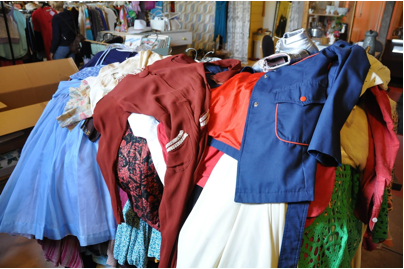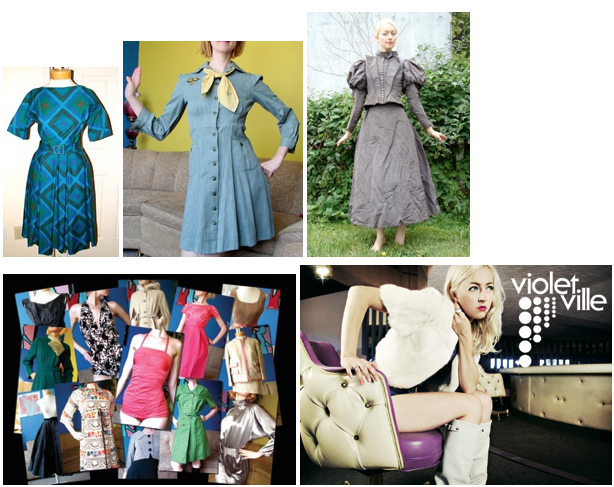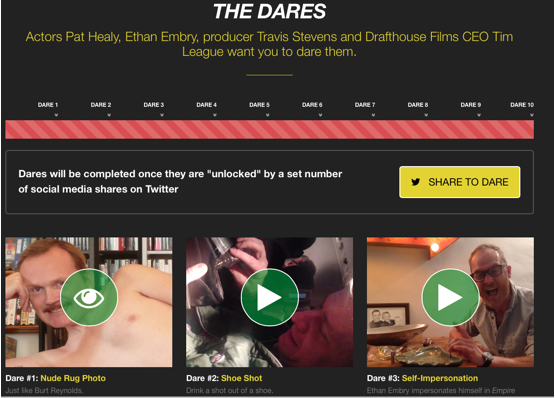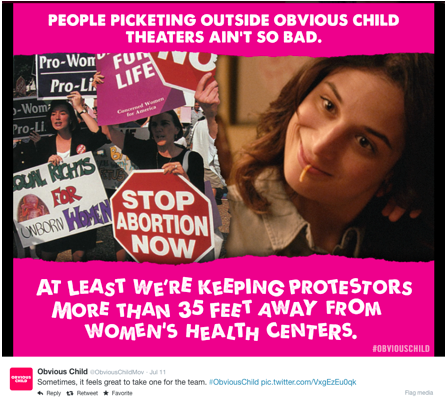If you asked me how I came to the film world and I told you I essentially started by selling vintage clothing on eBay, you would probably think I answered the wrong question. This myopic line of thinking is exactly why you might think it’s hard to make, sell, and distribute a film. When I started selling on eBay 10 years ago, it was like the Wild Wild West – there were no instruction manuals or established models for success. I was trying to figure out how to sell something that my customers couldn’t touch or feel (or even see that well, as I still had no idea how to operate a camera).
The new world of independent film is looking more and more like this uncharted territory everyday. With existing consumption patterns becoming outdated, crowdfunding emerging as the new normal, and myriad new digital distribution models developing, there’s really no *one* right way to get your film made, sold, or seen.
Here are five things I learned from selling on eBay that might help:
1. EMBRACE YOUR LIMITATIONS
Whatever your limitations – be they time, budget, or resources – consider them guideposts towards focusing on what you have the ability to control. Having too many choices can paralyze the decision-making process. Working with the resources you have available rather than focusing on the “if only” of what you think you need will help funnel your efforts in an efficient way. Work with what you’ve got. Decide, and move forward.
When I first started selling clothing, I made a game of it with myself. I would take $20 to the local thrift store, fill up my cart with cool things, then figure out which few things would allow me to turn my $20 into more than $20. That attitude resulted in buying a dress for $5 that sold at auction for $750. We shouldn’t always be cheapskates, but it’s helpful to consider that great things can be accomplished with very little.

2. OBSERVE AND BE FLEXIBLE
The crumbling parts of the film industry suffer from a severe case of narrow-mindedness. Clinging to the way the industry has historically worked isn’t as helpful as observing even minor successes in the current landscape. If you can neutrally observe what works and what doesn’t in terms of presenting your film, you might uncover creative solutions and be able to make changes more fluidly.
When selling online, I would maintain some regularity to how and when I would list items for sale, but within that framework I would make small changes to the way I photographed and described items weekly. I tried listing auctions on different times and different days of the week, changed my vocabulary, used more or less enthusiastic punctuation, etc. You can definitely overdo it and never realize what’s really helping, but if you observe and explore, small modifications can make a huge difference.

3. ENLIST PEOPLE TO HELP – AND PAY THEM

Forget “friend rates” and working for free. If you pay people a decent fee for their work, they’ll be invested in your work. You’ll gain their support both during the project and after, when you’ll need people posting on social media and helping promote your film.
The first freelance photo editor I hired was also one of my best friends. But as a freelancer she went where the money was, so after deciding on a friend rate, I found she’d place my work squarely at the bottom of her to do list. After angrily deciding we couldn’t work together, we took a break, spoke a few months later, decided on a reasonable fee, and we’ve been co-existing as friends and colleagues ever since.
4. CREATE PERSONAL ENGAGEMENT
Part of what bothers me about overdependence on CGI is that I’m a real, live person. And while anthropomorphized robots as a concept *sounds* humanistic, the requisite visual perfection of CGI somewhat dismantles our ability to feel for Optimus Prime in the same way we might for R2D2. Feeling for, relating to, and caring about characters engages your audience. Engagement breeds attachment not just for the characters themselves but for the film itself and consequently for you as its creator. So just as you would develop a character for a film, you can develop the character *of* the film. Personality and engagement matters across every level and at every step.
When I was first figuring out how to photograph and present clothing online, I used a cheap half-mannequin barely resembling a body – it was more of a hanging triangle. Clothing would droop on it like some sad sack. Clipping a dress to make it look more shapely helped slightly, but ultimately a human body became necessary. At first, I’d crop my head and feet out of the photos as unnecessary, but I quickly realized people responded more to my face than to anything. My face isn’t special, but it’s more memorable than a hanging triangle, and when you see it every day you will likely respond to it if for no other reason than it’s familiar to you. Give your project an identity, a face, a character – someone human to respond to.

5. LEVERAGE THE DIGITAL WORLD
Everyone who has a stake in anything online talks about content. As filmmakers, you have a stake in the online world because that’s where your audience begins (and ends!). You can create content before and beyond your film, and you can share it online in an accessible and engaging format. Constant, creative digital marketing will help build the community that will bolster your projects.
After realizing I had become a digital representation of my brand of vintage clothing, I began developing a personal online presence through every available platform. Social media often seemed like a colossal waste of time – if you’re anything like me, you admonish yourself for spending too much time on social media as though it’s time that could be better spent “working,” i.e. contributing to the bottom line and focusing on “getting things done.” But I found then, as I do now more than ever, that even seemingly trivial interactions with people online can forge connections, relationships, and a larger sense of community that’s indispensable to everything I want to create.








